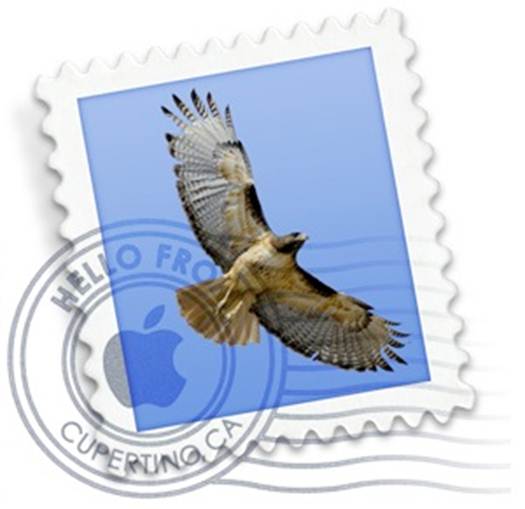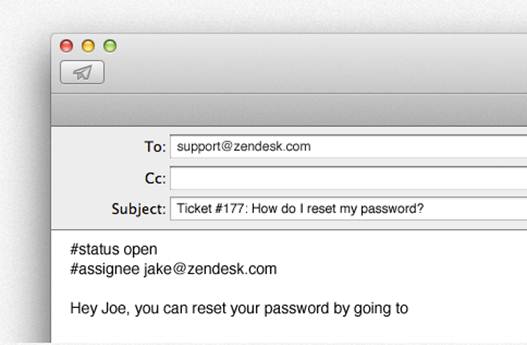Email is an integral part of our
lives, and Apple’s Mail app is the perfect way to send, receive and manage your
messages.
Apple introduced its own Mail application
with the very first version of OS X, although it wasn’t a new program, having
been developed for the NeXTSTEP operating system that would become Apple’s
flagship OS. At the time it had plenty of competition from the likes of
Microsoft’s Outlook and later Entourage, Netscape’s Communicator, Eudora and
others, but as Mail matured it started to win over more and more users.
To begin with, its functionality was
relatively limited but this was actually one of its better points. Where other
mail apps had a million features that most people didn’t use, Mail was more
lightweight.

Email
is an integral part of our lives
As email grew to dominate every aspect of
our lives, Mail on the Mac came of age and quietly added features like iLife
integration, Spotlight support and behind the scenes, ActiveSync and Microsoft
Exchange Server support for use in corporate environments. With the advent of
iOS and iCloud, Mail has moved to devices like the iPad and iPhone too, and
incorporated advanced new features such as syncing mail across all your
different Apple devices. Although it looks simple on the surface, Mail has lots
of tools and tricks you may not be aware of, so read on to find out how to
master Mail on your Mac...
Setting up Mail in OS X
Setting up multiple email accounts isn’t
as hard as you think
1. Set up a new account Add an account at
any time by going to Mail’s Preferences and locating the Accounts tab. There,
click the plus button to add a new account and enter your name, email address
and password in the required boxes. Mail will automatically detect if you have
entered an address from a big mail provider like Hotmail, Gmail or Yahoo, and
attempt to make all the under-the-hood settings for you. If your details check
out, your account will be set up automatically when you press ok.

Set
up a POP or IMAP based email using Mail’s setup assistant
2. Choose the right account type Mail
supports POP, IMAP and SMTP mail protocols. If you have your own domain and
ISP, you will probably be using POP and SMTP to receive and send mail
respectively. Your settings might look something like pop.mydomain.com and
smtp.mydomain.com. Many web-based email services like Gmail support both,
though they recommend using IMAP. IMAP offers two-way communication between
your web-accessed Gmail account and the Mail app. So when you log into Gmail
using a web browser, actions you perform on email clients and mobile devices
will instantly and automatically appear in Gmail. By using IMAP, all your mail
is accessible from any device at any time.
3. Customize Mailbox behaviours You can
streamline the way you work with Mail by setting up some handy automatic
behaviours. If you go into the Preferences > Accounts section and click the
Mailbox Behaviours tab, you have several options that can help with
housekeeping. The first lets you choose to automatically delete sent mail when
it reaches a certain age, when quitting Mail or to never delete it. The same
options are available for mail marked as junk, and it’s perhaps more likely
that you will choose to use auto-delete here. Finally the same deletion options
are available for mail that has been placed in the Trash, and there’s an option
to move deleted messages to the Trash mailbox, which helps keep things tidy.

Mail
supports several protocols and you can see what you’re using in the Accounts
preferences section
4. Automatically check for mail In Mail’s
Preferences > General tab, you can choose to have the app check for new mail
at specified intervals ranging from every minute to every hour, or manually,
meaning it only checks when you press the Send and Receive button. Checking
every minute is pretty handy on a Mac unless you’re worried about battery life
or perhaps bandwidth. And equally on an iOS device you might want to set this
to something less frequent, or to manual, in order to reduce the drain on your
data allowance.
5. Check individual accounts In the
Preferences > Accounts section you can set for each individual account
whether it is included in the ‘check for new messages’ process. Tick this box
and Mail will look on the server whenever a check is performed. Uncheck it, and
it won’t. This means that you can have some accounts checked regularly and
others only manually handy for separating work and personal accounts, for
instance.
6. Use your own ISP Many people have their
own.com or similar email address, run through an ISP or hosting company.
Setting these up is similar to setting up a Gmail or Hotmail account. You need
your provider to tell you the SMPT, POP or IMAP settings and you need your
username password and email address. This kind of stuff has been simplified in
recent years and you usually find setup very straightforward.
The interface explained
Mail’s interface is sleek but hides many
useful features
1. Send, receive and New mail The button
with the envelope icon is Mail’s send and receive all command, which polls all
servers for new mail. You can set some accounts to be included in this and
others not, if you prefer. The New mail button to its right will open up a new
message window.
2. Command buttons Here you find the Reply,
Reply All, Forward and Mark As Junk buttons as well as the option to delete a
message using the button with the Trash icon. To the right is the Flag button
where you can assign various coloured flags to specific emails, making them
easy to spot and sort.

Command
buttons
3. The message list Seen here in the newer,
iOS style view (don’t worry, you can use Classic view too) this list of emails
can be filtered by clicking on a specific mailbox on the left. Alternatively
they can be sorted using different criteria such as date received, name of
sender or message size. Clicking a message causes its content to appear in the
section to the right.
4. The mailboxes You can see both local and
remote mailboxes in this list, and drag messages from any list into any other
list. Smart mailboxes live alongside regular ones, and you can expand IMAP
mailboxes to see their contents. Here, it’s Gmail that’s being used.
5. Formatting controls These buttons let
you add an attachment (you can also drag and drop from the Finder), change the
text formatting of the message, add Stationery from a preset list of templates
and also open your iPhoto browser directly in Mail to drag and drop images,
which can be resized to control the overall size of the message.
6. To, from and Cc You can start typing an
address and Mail will autocomplete it if the recipient is in your Contacts or
Mail database already. The same goes for Cc which is used to copy people in. If
you have more than one account set up, choose here which one it gets sent from,
making it easy to send from a different account without restarting a message.

You
can start typing an address and Mail will autocomplete it
7. Customize field Click this icon to
reveal additional fields when composing a message. As well as To and Cc you can
also choose Bcc, which adds a recipient without revealing their address to
other recipients, Reply To, in case that’s different to the account being sent
from, and also a Priority field so you can specify if a message is urgent.
8. Templates Mail in OS X 10.8 comes with a
range of pre-formatted templates that you can customize to suit your
requirements. It’s also possible to copy and paste HTML into a message, email a
web page as HTML, a PDF or a link, and email content directly from other iLife
app of the Finder.